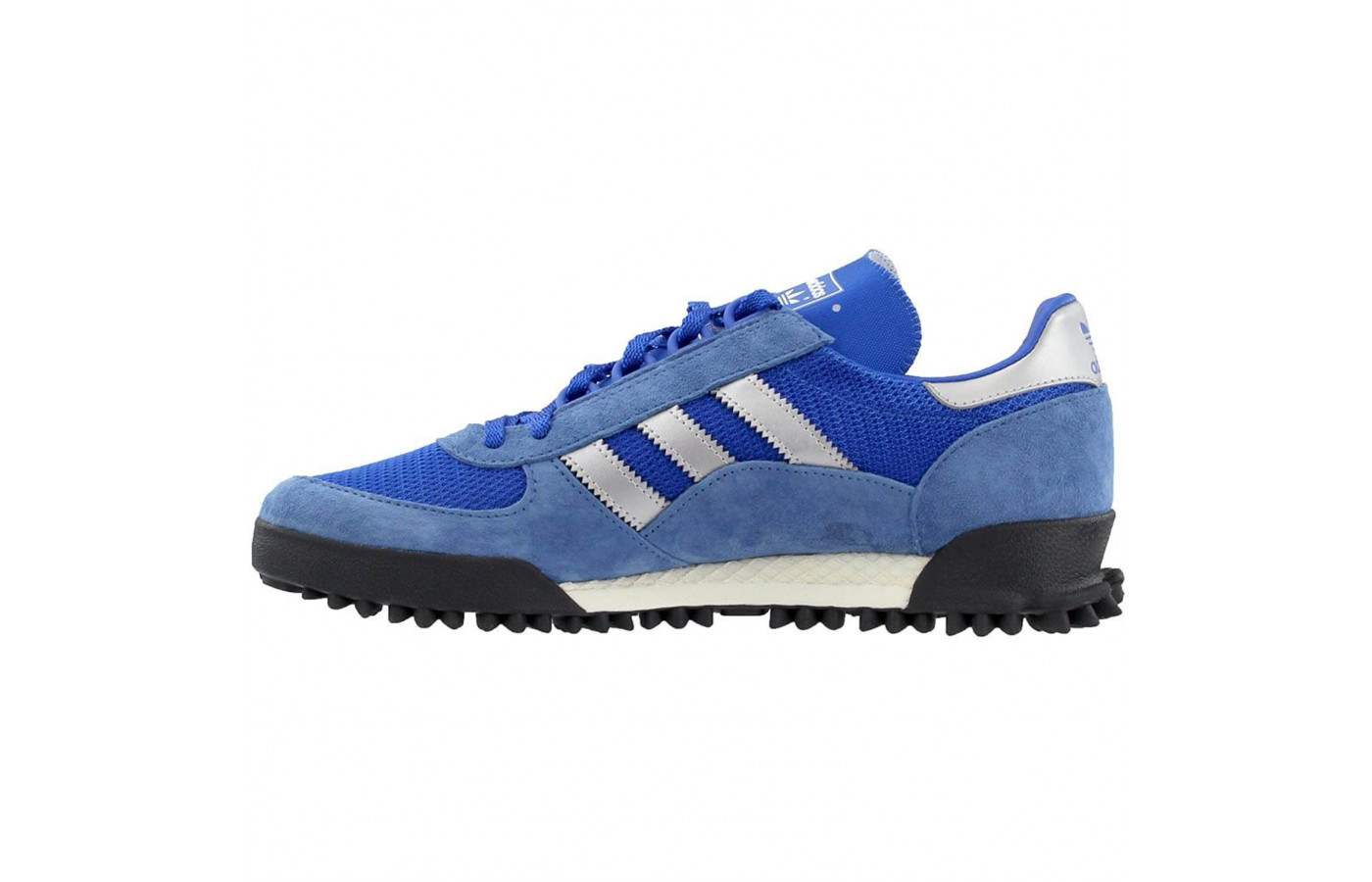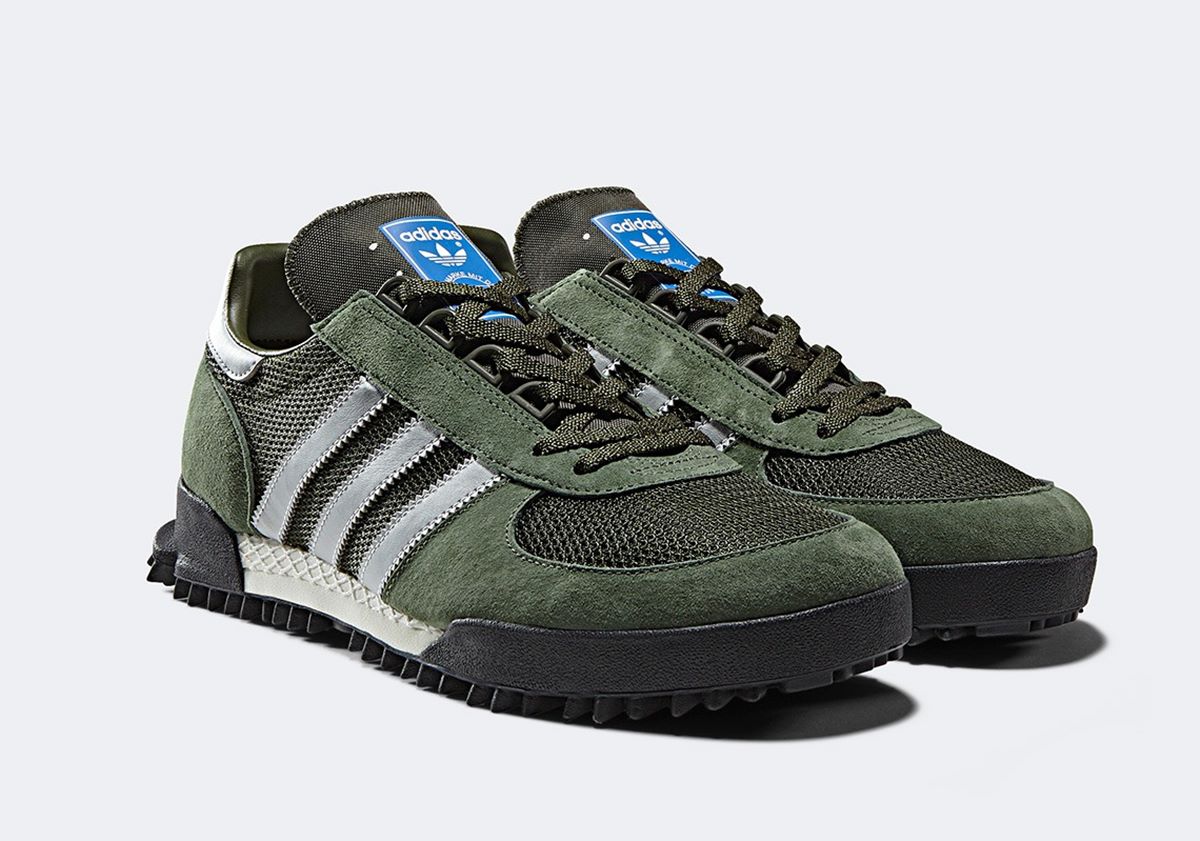Home>Misc>Featured>What To Wear For Half Marathon In 40 Degrees


Featured
What To Wear For Half Marathon In 40 Degrees
Modified: January 2, 2024
Discover the perfect running attire for your half marathon in 40 degrees. Stay comfortable and stylish with our featured collection.
Introduction
Running a half marathon is no small feat, requiring dedication, training, and mental strength. However, when it comes to running in cold temperatures, the challenge becomes even greater. In particular, running a half marathon in 40 degrees Fahrenheit (4 degrees Celsius) poses unique considerations for choosing the right clothing.
Proper clothing is crucial for comfort, performance, and most importantly, for ensuring your safety during a half marathon in chilly weather. Wearing the right gear can help regulate your body temperature, protect you from the elements, and prevent discomfort such as chafing or hypothermia.
In this article, we will delve into the importance of choosing the right clothing for a half marathon in 40 degrees. We will explore the various factors to consider and provide suggestions for base layers, insulating layers, outer layers, footwear, headwear, handwear, and accessories to optimize your running experience in cold temperatures. Whether you are a seasoned runner or a novice preparing for your first half marathon, this guide will help you make informed decisions about what to wear to stay comfortable and perform at your best.
No matter the distance, running in cold temperatures can be challenging. It’s essential to strike the right balance between staying warm and preventing overheating. Dressing appropriately with the right layers can help you maintain a comfortable body temperature throughout the race.
So, if you’re gearing up to run a half marathon in 40 degrees, let’s dive into the world of cold-weather running gear to ensure you have the right clothing from head to toe.
Importance of Proper Clothing for Running in Cold Temperatures
When running in cold temperatures, wearing the appropriate clothing is essential not only for your comfort but also for your health and safety. The right gear can help you maintain a comfortable body temperature, prevent hypothermia, and reduce the risk of injury. Here are some key reasons why proper clothing is crucial for running in cold temperatures:
- Regulating Body Temperature: Running generates heat, and the cold weather can cause your body to lose heat rapidly. By layering your clothing, you can regulate your body temperature by adding or removing layers as needed. This allows you to stay warm during the start of the race when temperatures may be cooler, but also prevent overheating as your body warms up.
- Protection from the Elements: Cold temperatures often come hand in hand with other weather elements, such as wind, rain, or snow. Proper clothing can shield you from the harshness of these elements, keeping you dry, protected, and able to focus on your run. Water-resistant or windproof materials can provide an additional layer of protection against the elements.
- Preventing Hypothermia: Cold temperatures can increase the risk of hypothermia, a dangerous condition where your body loses heat faster than it can produce. Hypothermia can lead to confusion, fatigue, and even loss of consciousness. Choosing clothing that insulates well, retains body heat, and wicks away moisture can help prevent this condition and keep you safe during your run.
- Avoiding Chafing and Discomfort: Friction and chafing can become more common in cold temperatures, as moisture from sweat or precipitation can linger on the skin. Wearing performance fabrics that wick away moisture, as well as seamless or flat-seamed garments, can minimize the risk of chafing and provide greater comfort during your half marathon.
- Injury Prevention: Cold muscles are more prone to injury, as they become stiffer and less flexible. By wearing appropriate clothing, you can help keep your muscles warm and reduce the risk of strains or tears. Consider compression garments or layers that provide warmth and support to your muscles.
By understanding the importance of proper clothing for running in cold temperatures, you can ensure that you are prepared and equipped to face the challenges that come with it. Now that we have examined the significance of choosing the right clothing, let’s explore the various factors to consider when selecting your gear.
Factors to Consider in Clothing Choice for a Half Marathon in 40 Degrees
When preparing for a half marathon in 40-degree weather, it’s important to consider several factors that will influence your clothing choices. These factors will help you determine the appropriate layers, materials, and accessories to ensure you stay comfortable and perform at your best. Here are some key factors to consider:
- Temperature and Weather Conditions: While the temperature is the primary factor to consider, it’s also important to take into account other weather conditions such as wind, rain, or snow. These factors can affect how you layer your clothing and the type of materials you choose.
- Personal Comfort Level: Everyone’s tolerance to cold temperatures varies. Consider how you personally react to the cold and what level of warmth you need during physical activity. Some runners may prefer to dress lighter while others may feel more comfortable with additional layers.
- Duration of the Run: Think about how long you anticipate being out in the cold. A half marathon can take a considerable amount of time to complete, so it’s important to choose clothing that will keep you warm for the duration of the race.
- Moisture Management: Sweating is still a possibility even in colder temperatures, especially during longer runs. Look for moisture-wicking fabrics that will help move sweat away from your body, keeping you dry and preventing discomfort.
- Layering System: Layering is key when running in 40-degree weather. It allows you to adjust your clothing as your body temperature changes throughout the run. Consider using a base layer, insulating layer, and outer layer to provide flexibility and adaptability.
- Visibility and Safety: In addition to temperature considerations, think about the visibility during your run. If you’re running in low-light conditions, choose clothing with reflective elements or opt for bright colors to enhance your visibility to other road users.
- Fit and Comfort: Ensure that your clothing fits properly and allows for freedom of movement. Avoid any garments that may be too tight or restrict your stride. Pay attention to details such as flat seams, tagless designs, and adjustable features for maximum comfort.
By taking these factors into consideration, you can make informed decisions about the appropriate clothing choices for your half marathon in 40-degree weather. With these factors in mind, let’s explore the different layers you should consider when dressing for the run.
Base Layer Options for Running in 40 Degrees
The base layer is the foundation of your running outfit and plays a crucial role in keeping you comfortable and dry during a half marathon in 40-degree weather. The main function of a base layer is to wick moisture away from your skin, keeping you dry and regulating your body temperature. Here are some base layer options to consider:
- Technical Performance Fabrics: Look for base layers made from technical performance fabrics like polyester or merino wool. These fabrics are known for their excellent moisture-wicking properties, helping to move sweat away from your body and keep you dry throughout your run. They also provide insulation, even when damp, to keep you warm.
- Long-Sleeve Tops: Opt for a long-sleeve base layer to provide ample coverage and warmth. Look for tops with a snug, but not too tight, fit that allows for freedom of movement and easy layering over the top.
- Temperature Regulation: Consider base layers with temperature regulation features such as ventilation panels or mesh inserts. These strategically placed areas allow for increased breathability and improved airflow, enhancing your comfort level as you run.
- Seamless Design: Look for base layers with seamless construction or flatlock seams to minimize the chance of chafing or irritation as you move. This is especially important for long-distance runs like a half marathon.
- Skin-Friendly and Odor-Resistant: Some base layers are designed with odor-resistant properties to prevent the buildup of sweat-related odors. Additionally, look for base layers that are gentle on the skin and hypoallergenic, reducing the risk of irritation or discomfort.
- Consider Compression: Compression base layers can provide added support to your muscles during the run, enhancing blood flow and reducing muscle fatigue. These base layers also help with muscle recovery post-run.
Choosing the right base layer is essential for keeping your body dry, warm, and comfortable during a half marathon in 40-degree weather. Experiment with different materials and features to find the base layer that suits your personal preferences and needs. Once you have a suitable base layer, you can move on to selecting the appropriate insulating and outer layers for your run.
Insulating Layer Options for Running in 40 Degrees
When running in 40-degree weather, an insulating layer is essential to help trap heat close to your body and provide an additional layer of warmth. The insulating layer is placed on top of the base layer and acts as a barrier against the cold temperatures. Here are some insulating layer options to consider:
- Lightweight Fleece Jackets: A lightweight fleece jacket is a versatile choice for an insulating layer. Fleece provides excellent insulation while still allowing moisture to escape, keeping you warm and dry during your run. Look for a jacket with a full zipper for easy ventilation if needed.
- Thermal Tops: Consider thermal tops made from technical fabrics like polyester or merino wool. These tops offer excellent heat retention and insulation properties while still being breathable and moisture-wicking. Thermal tops are ideal for maintaining a comfortable body temperature during colder runs.
- Down Vests: A down vest is a lightweight and compact option that provides excellent insulation for your core without restricting arm movement. Down vests offer superior warmth and can easily be packed or tied around your waist if you need to remove a layer during the run.
- Hybrid Insulation: Look for insulating layers with a combination of materials, such as fleece and synthetic insulation, for enhanced warmth and flexibility. These hybrid options provide warmth in crucial areas while offering breathability in others, ensuring you stay comfortable throughout the run.
- Adjustable Layers: Consider insulating layers with adjustable features like drawstrings or adjustable cuffs. These allow you to customize the fit and seal out cold drafts, providing optimal warmth and comfort during your run.
- Reflective Elements: Opt for insulating layers with reflective elements to enhance your visibility during low-light conditions. This will help ensure your safety and increase your visibility to others on the road.
Choosing the appropriate insulating layer will help you maintain a comfortable body temperature while running in 40-degree weather. Experiment with different materials and styles to find the insulating layer that provides the right balance of warmth and breathability for your preferences. Once you have your base and insulating layers sorted, it’s time to consider the outer layer for added protection against the elements.
Outer Layer Options for Running in 40 Degrees
When running in 40-degree weather, an outer layer is crucial for protecting yourself against the elements and providing an extra barrier of insulation. The outer layer acts as a shield, blocking wind, rain, and snow, while still allowing moisture to escape. Here are some outer layer options to consider:
- Lightweight Windbreaker: A lightweight windbreaker is an excellent choice for an outer layer in cool temperatures. Look for a windbreaker made from water-resistant fabric to protect you from light rain or snow. Opt for one with vents to enhance breathability, preventing overheating during your run.
- Waterproof and Breathable Jacket: If you anticipate running in rainy conditions, consider a waterproof and breathable jacket. Look for a jacket with sealed seams and a durable water repellent (DWR) coating to keep you dry. Breathability is essential to allow sweat to escape, preventing you from feeling clammy or overheated.
- Softshell Jacket: Softshell jackets offer a blend of weather protection, breathability, and flexibility. They are designed to repel wind and water while providing excellent breathability during high-intensity activities like running. Look for a softshell jacket that offers moderate insulation and stretch for optimal performance.
- Layer with Vests or Gilets: If you prefer more versatility in your outer layer, consider layering with a vest or gilet. These sleeveless options provide extra core warmth while allowing for freedom of movement in the arms. Choose a vest with insulation or wind-resistant panels based on your specific needs.
- Visibility Features: Look for outer layers with reflective elements to enhance your visibility during low-light conditions. This is especially important when running in the early morning or evening. Reflective detailing helps ensure your safety by making you more visible to drivers and other pedestrians.
- Hooded Jackets: Consider outer layers with a hood to provide additional protection for your head and neck during inclement weather. Adjustable hoods allow you to customize the fit, ensuring a snug and comfortable feel while running.
Choosing the appropriate outer layer is crucial for shielding yourself from wind, rain, and other unfavorable conditions during a half marathon in 40-degree weather. Look for a balance between weather protection and breathability to ensure you stay dry, comfortable, and able to perform at your best. Now that we have covered the base, insulating, and outer layers, let’s move on to consider footwear options for running in 40 degrees.
Footwear Considerations for Running in 40 Degrees
Choosing the right footwear is essential for running in 40-degree weather. Your shoes should provide both comfort and protection as you tackle the half marathon. Here are some footwear considerations to keep in mind:
- Insulation: Look for running shoes that provide adequate insulation to keep your feet warm in cooler temperatures. Shoes with an extra layer of insulation or those designed for winter running conditions can help prevent your feet from getting too cold.
- Breathability: While insulation is important, it’s equally crucial to choose running shoes that offer breathability. This will help prevent excessive sweating and moisture buildup inside the shoes, which can lead to discomfort or even blisters during long-distance runs.
- Traction: Consider the traction of the shoes, especially if you anticipate running on wet or slippery surfaces. Look for outsoles with good grip to provide stability and reduce the risk of slipping while running in 40-degree weather.
- Water-Resistance: If there’s a chance of rain, snow, or wet conditions during your half marathon, opt for running shoes with water-resistant features. These shoes can help keep your feet dry and protected from moisture, reducing the risk of blisters and discomfort.
- Proper Fit: Ensure that your running shoes fit properly and provide enough room for your toes to move comfortably. Shoes that are too tight can restrict circulation and cause discomfort, especially in colder temperatures when your feet are more prone to feeling cramped.
- Consider Gaiters: For added protection from snow or debris, consider wearing gaiters. These are durable, wrap-around covers that can be attached to your shoes or lower legs to keep snow, mud, and other elements out of your shoes.
Take the time to find the right running shoes for your half marathon in 40-degree weather. Proper footwear will provide comfort, support, and protection for your feet throughout the race. With the right shoes on your feet, you’ll be ready to tackle the next section of your outfit: headwear and handwear.
Headwear and Handwear Suggestions for Running in 40 Degrees
Protecting your extremities, such as your head and hands, is crucial when running in 40-degree weather. Cold temperatures can cause discomfort and even lead to frostbite if proper precautions are not taken. Here are some headwear and handwear suggestions to keep you warm and comfortable during your half marathon:
- Beanies or Headbands: Wearing a beanie or headband can help to retain heat and keep your head warm during the run. Look for moisture-wicking and insulating materials, such as merino wool or fleece, to help regulate your body temperature.
- Ear Warmers or Ear Muffs: If you prefer not to cover your entire head, ear warmers or ear muffs are a great alternative. These accessories will protect your ears from the cold while allowing heat to escape from your head.
- Gloves or Mittens: Protecting your hands is essential in cooler temperatures. Choose gloves or mittens made from moisture-wicking and insulating materials to keep your hands warm and dry. Look for touchscreen compatibility if you plan to use your phone or smartwatch during the run.
- Layering Handwear: Consider layering your handwear for added warmth. Wearing a thin liner glove underneath a thicker glove or mitten can help trap heat and provide extra insulation without sacrificing dexterity or flexibility.
- Thumbholes or Convertible Handwear: Look for handwear options with thumbholes or convertible features that allow you to expose your fingers when needed. This gives you the flexibility to regulate your hand temperature as you warm up during the run.
- Neck Gaiters or Scarves: Don’t forget about protecting your neck and face. A neck gaiter or scarf can provide added warmth and prevent drafts from entering your jacket. Look for breathable and moisture-wicking materials that will keep you comfortable during the run.
Choosing the right headwear and handwear will help you stay comfortable and protected throughout your half marathon in 40-degree weather. Everyone’s tolerance to cold may vary, so experiment with different options to find what works best for you. Now that we’ve covered essential accessories for your head and hands, let’s explore some recommended accessories to enhance your running experience in colder temperatures.
Recommended Accessories for Running in 40 Degrees
When running in 40-degree weather, there are several accessories that can enhance your comfort, safety, and overall running experience. These accessories are designed to provide additional protection and convenience while tackling a half marathon in cooler temperatures. Here are some recommended accessories to consider:
- Compression Socks: Compression socks can improve circulation and provide support to your lower legs during the run. They can also help keep your legs warm and reduce muscle fatigue, making them a valuable accessory for longer runs in colder temperatures.
- Running Tights or Leggings: Consider wearing running tights or leggings to provide extra warmth and coverage for your legs. Look for moisture-wicking and thermal materials that will keep you comfortable and protected from the cold.
- Reflective Gear: Running in low-light conditions requires additional safety precautions. Invest in reflective vests, armbands, or clip-on lights to make yourself more visible to drivers and other pedestrians. Ensure that you are easily recognizable when running at dawn, dusk, or during overcast weather.
- Hydration Pack or Belt: Staying hydrated during your half marathon is crucial, regardless of the temperature. Consider using a hydration pack or belt to conveniently carry water or electrolyte drinks during the race. Look for insulated options to help keep your beverages at the desired temperature.
- Smartwatch or GPS Device: Keeping track of your pace, distance, and heart rate is important during a half marathon. Wear a smartwatch or GPS device that is compatible with cold temperatures to monitor your performance and stay on track with your goals.
- Handheld or Waist Pack: If you prefer having quick access to your essentials, consider carrying a handheld bottle or waist pack. It allows you to carry energy gels, phone, keys, or any other small items conveniently during the run.
- Sunglasses: Even in colder temperatures, protecting your eyes from the sun’s glare is important. Wear sunglasses with UV protection to shield your eyes and improve visibility, especially on bright, sunny days.
These recommended accessories can enhance your running experience and address specific needs when running in 40-degree weather. Choose the accessories that suit your preferences, comfort level, and individual requirements to ensure a successful and enjoyable half marathon. Now that we have explored the various accessories, let’s wrap up our guide to running in 40 degrees.
Conclusion
Running a half marathon in 40-degree weather presents unique challenges, but with the right clothing and accessories, you can tackle the race comfortably and safely. It’s essential to consider factors such as temperature, weather conditions, personal comfort, and moisture management when choosing your running gear.
Start with a base layer made from technical fabrics that wick away moisture and regulate your body temperature. Layer with an insulating layer to provide additional warmth, and top it off with an outer layer that offers protection against wind and precipitation. Don’t forget to choose footwear that balances insulation and breathability to keep your feet comfortable throughout the run.
Accessories such as headwear, handwear, compression socks, and reflective gear can further enhance your comfort, safety, and performance. Consider the specific needs of your body and the conditions you will be running in when selecting these accessories.
Remember, finding the right combination of clothing and gear may require some experimentation. It’s essential to test your running outfit during training runs to ensure it provides the desired comfort and performance. Pay attention to your body’s responses and make adjustments as necessary.
By carefully considering your clothing choices and following these recommendations, you can confidently tackle a half marathon in 40-degree weather. Stay warm, stay safe, and enjoy the exhilarating experience of running in cooler temperatures. Good luck with your race!









